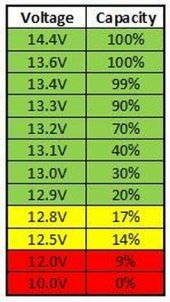3.4v rested near 25degsC, no cell current, is just about full charge.
To get current to flow in a cell there requires an over-potential voltage to create and move ions. This overpotential is terminal voltage increase over rested voltage for charging and lower then rested for discharge. As cell approaches full charge the charging over-potential to support demanded charge current gets greater because most of available lithium ions have be swept up into anode so more 'kick' over-potential energy is needed to create and collect the remaining scarce lithium ions.
Losses in a cell is over-potential voltage X cell current plus the cell impedance X cell current squared. LFP have about the best charge-discharge efficiency of all battery types.
Since over-potential is based on demanded cell current, when charging at low current (approx <0.05C) the overpotential is lower so the increase in terminal voltage is lower over rested cell voltage. Charging takes longer due to lower charge current but cell achieves full charge at a lower terminal voltage and 3.65v is not necessary. At higher current ( approx >0.3C) the cell will not be at full charge when terminal voltage first reaches 3.65v due to higher over-potential for higher cell current. At high cell charge rate, the cell must be held at 3.65v for a while to fully charge cell. The 3.65v limit on terminal voltage is a value that curtails damaging effects on cell, primarily electrolyte degradation.
Because of the logarithmic overpotential voltage to cell current relationship, an overpotential greater than 10-20mV is required on a LFP cell to get any significant current to flow through cell. This is why just passively paralleling cells will not achieve equilization of their state of charge. You will only achieve a rested cell voltage variance of 20-40 mV which can be as much as 30-40% difference in state of charge between the paralleled cells.
I probably should mention surface charge. When cell is fully charged and charge current is allowed to drop to low level, a surface charge voltage of up to couple tenths of a volt can develop, primarily on graphite anode side of cell. This is like a supercap but the charge storage on LFP cell is very low, only about 0.01% C of cell. It can be burned off within a minute with a load resistor of about 3 ohms. If not burned off this increase in terminal voltage can take several days to bleed down. It can screw up your estimation of charge state by cell voltage reading.



